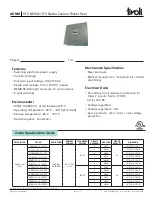
20
Alignment
Alignment Preparation & Precautions
Before beginning align"ment, connect the trans-
ceiver to the PC using the VPL-1 Connection Ca-
ble, and upload the current frequency data from
the customer’s radio to the computer; save this
information to disk so that it can be downloaded
to the radio again after alignment is completed.
Next, refer to the label at the rear of the bot-
tom cover of the radio to determine its “version”
(frequency range); using the CE-20 software, pro-
gram the four “Test” simplex channels shown in
the table below, as appropriate for the radio ver-
sion you are working with:
After completing one alignment step, read the
following step to determine whether or not the
same test equipment will be required. If not, re-
move the test equipment (except dummy load
and wattmeter) before proceeding.
Correct alignment requires that the ambient
temperature be the same as that of the transceiv-
er, and that this temperature be held constant
between 68°F and 86°F (20°C and 30°C). When
the transceiver is brought into the shop from hot
or cold air, it should be allowed time to come to
room temperature before alignment is attempt-
ed. All test equipment should similarly be thor-
oughly warmed up.
Whenever possible, alignments should be per-
formed with oscillator shields and circuit boards
firmly affixed in place.
Note:
Signal levels in dB referred to in these align-
ment procedures are based on 0 dBµ = 0.5 µV
(closed circuit).
Connect the test equipment as shown in the
pictorial above.
Version “A”
400.000 MHz
415.000 MHz
430.000 MHz
430.000 MHz
Version “D”
450.000 MHz
465.000 MHz
480.000 MHz
480.000 MHz
Channel
1
2
3
4
Alignment Setup
50
W
Dummy Load
In-Line
Wattmeter
Deviation
meter
Frequency
Counter
RF Sampling
Coupler
RF Signal
Generator
AF
Generator
Power Supply
13.8 V
COM Port
CT-71 Connection
cable
Transceiver
Version “D”
450.000 MHz
465.000 MHz
480.000 MHz
480.000 MHz
Download this data to the transceiver under test.
Note:
When alignment is finished, you may wish to
save these alignment channels as a disk file for
future service work. Make certain to re-load the
original channel data (uploaded from the radio
prior to servicing) into the transceiver, and com-
plete a final performance check, before return-
ing the equipment to the customer.
A 50-
W
dummy load and in-line wattmeter
must be connected to the rear-panel antenna jack
in all procedures which require transmission.
Correct alignment is not possible without a re-
sistive 50-
W
termination for the transmitter.
Be certain that your power supply delivers
13.8 VDC, as measured directly at the radio's DC
input plug, during transmitter tests. Any volt-
age drop in the cable, or due to the loading on
the power supply, must be compensated to 13.8
VDC for accurate alignment.
Summary of Contents for VX-2000U
Page 10: ...10 Note Block Diagram ...
Page 11: ...11 Block Diagram VX 2000U Main Unit Block Diagram ...
Page 12: ...12 Block Diagram Note ...
Page 13: ...13 Interconnection Diagram VX 2000U 4ch Front Interconnection Diagram T9206689A Lot 6 ...
Page 14: ...14 Interconnection Diagram VX 2000U 40ch Front Interconnection Diagram T9206689A Lot 6 ...
Page 24: ...24 Note MAIN Unit Lot 1 ...
Page 27: ...27 MAIN Unit Lot 4 Circuit Diagram ...
Page 28: ...28 MAIN Unit Lot 4 Note ...
Page 31: ...31 MAIN Unit Lot 7 Circuit Diagram ...
Page 32: ...32 MAIN Unit Lot 7 Note ...
Page 35: ...35 MAIN Unit Lot 10 Circuit Diagram ...
Page 36: ...36 MAIN Unit Lot 10 Note ...
Page 55: ...Display 1 Unit 55 Circuit Diagram ...
Page 58: ...58 Display 1 Unit Note ...
Page 59: ...Display 2 Unit 59 Circuit Diagram ...
Page 62: ...62 Display 2 Unit Note ...
















































